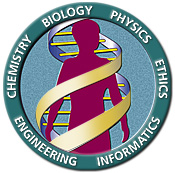 Hold the front page! Some white-coated genius somewhere has found a gene for violence: suddenly our streets will be a safer place. Or how about genes for obesity and ageing, so we can look forward to becoming a nation of pert young things? On a more sinister note, what could be done with genes for child abuse, homosexuality, or immortality? With regard to our looks, brains and even personalities, there seems to be no end of scientists telling us what's in the genes. But how much do we really know? Is this just a clever game of bluff, played between the man in the street and the man in the labcoat?
Hold the front page! Some white-coated genius somewhere has found a gene for violence: suddenly our streets will be a safer place. Or how about genes for obesity and ageing, so we can look forward to becoming a nation of pert young things? On a more sinister note, what could be done with genes for child abuse, homosexuality, or immortality? With regard to our looks, brains and even personalities, there seems to be no end of scientists telling us what's in the genes. But how much do we really know? Is this just a clever game of bluff, played between the man in the street and the man in the labcoat?
At the Sanger Centre, near Cambridge, you can see for yourself a pipeline of genetic information. This is part of Britain's contribution to the International Human Genome Project, conceived in 1990 to sequence the human genome and identify the estimated 40,000 genes within it. Day and night letters of the genetic code A, C, T and G spell out the human genome as it streams across a large LED display, fresh from the DNA sequencing machines. This stream is literally the water of life, and those that sup here have a hard task indeed.
In the 1940's, pioneers such as Oswald Avery discovered that DNA was responsible for passing on inherited information. The field of molecular genetics was born, and promptly exploded. We now know that a mere 5% of all our DNA is genuine genes, translated into proteins by the machinery in the cell. The remainder is a mixture of regulatory sequences, dead genes and junk DNA. The task of picking out the specks of gold from the sand seems hard enough, without even thinking about their function. This year, coincident with the 50th anniversary of the elucidation of the structure of DNA, a complete version of the human genome is due to be published. Previous versions have been released, to much media fanfare, but those versions still contained gaps and errors.
This new version will be the best so far. But a string of letters without a purpose is like a recipe book with no titles, pictures or methods: we need to know what we are making with these genes. "Functional exploration of the genome" has become the new scientific buzz-phrase, but how is it done? Classical genetic experiments, carried out in organisms such as fruit flies, mice and tiny nematode worms, identify the functions of genes by first looking for mutant characteristics (a mutant phenotype)
. Mutants are created by exposing embryos, eggs and sperm to ultraviolet light or toxic chemicals, causing DNA damage and alteration of gene function. Complex experiments then follow in which proteins, bits of DNA or chemicals are added to defective cells or embryos in an attempt to restore a normal phenotype. Genes correcting these mutations can then be identified and sequenced, and their normal functions described. As it is somewhat unethical to use this approach with humans, and suitable naturally-occurring mutations are rare, research was restricted to experiments with cultured human cells or cell extracts. The advent of large-scale genomic sequencing now allows scientists to do so-called reverse genetics. Sequences of unknown genes can be fed into large databases, and tested for similarity (homology) to previously sequenced genes.
Organisms as diverse as yeast, flies, mice and man have been found to show high levels of homology between many gene families, reflecting the common evolutionary root of these species. In this way, we can guess at the functions of human genes without having to identify mutants. Having the DNA sequence of a gene makes it relatively easy to make the corresponding protein, which can be added to cultured cells or cell extracts. These experiments are important, as genes do not work in isolation - proteins and DNA must interact with each other in order to create a functional cell. Some proteins bind to DNA and switch genes on whilst others switch them off.
Division, death, and ageing of a cell are determined by its genes, and the magic carrot of a cure for cancer is dangling enticingly under the noses of scientists as they seek to understand these processes. But this rosy future has some thorny ethical and legal issues. Insurance companies may be unwilling to cover people with risky genes, whilst employers may demand a clean bill of genetic health before offering top jobs. Would prospective parents want to genetically vet their embryos before bringing them to birth? An apocryphal story tells of a criminal in America who pleaded that he was carrying a gene for violence as his defence. When his lawyers tried to prove it, they were sued by the man's father for defamation of his family's character. As we await the publication of the completed genome sequence we can only guess that more surprises are yet to come.
References
- Previous Telemedicine and the Grid
- Next The Microchimera Mixture









Comments
Add a comment